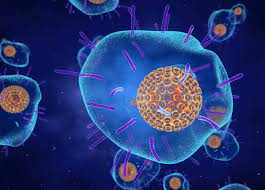
In a recent development, the National Institute of Virology (NIV) has identified the presence of a novel variant of the varicella-zoster virus (VZV), the virus responsible for chickenpox, in India. This new variant, known as Clade 9, is a subtype of VZV and marks its first documented appearance in the country. While the emergence of this variant is a noteworthy development, experts emphasize that there is no immediate cause for panic. Here is what you need to know about this discovery:
Understanding Varicella-Zoster Virus (VZV) Varicella-zoster virus, commonly known as VZV, is a herpesvirus that can lead to two distinct conditions: chickenpox, primarily seen in children and adolescents, and shingles, which affects adults. VZV exists in various clades, and the recent study conducted by NIV revealed the presence of Clade 9 in India. Clade 9 is the predominant strain in countries like Germany, the UK, and the US.

No Heightened Disease Severity Observed Dr. Pragya Yadav, a scientist at NIV and one of the authors of the study, reassured the public that the detection of VZV Clade 9 in India did not show any significant signs of increased disease severity among patients. This discovery was made possible due to heightened surveillance efforts during the COVID-19 pandemic. The study detailing this finding was published in the ‘Annals of Medicine’ on September 6.
Symptoms to Watch For While the situation does not warrant panic, it is essential to recognize the symptoms associated with the Clade 9 variant of chickenpox-causing VZV. These symptoms include the appearance of a rash, fever, loss of appetite, headache, fatigue, and a general sense of malaise. The classic chickenpox rash typically emerges 2-3 weeks after exposure to the virus, manifesting as papules or raised bumps. Subsequently, patients may experience additional symptoms such as fever, body aches, and headaches. This entire process spans approximately two weeks, with infectivity persisting until the rash scabs over.

Preventive Measures Although there is no cause for alarm, it is prudent to be aware of preventive measures to avoid infection. The most effective method of prevention is vaccination. Consult your healthcare provider for guidance on the recommended vaccinations. Additionally, practicing good hygiene remains crucial in reducing the risk of contracting the virus. Frequent handwashing with soap and water, particularly after coughing, sneezing, or being in contact with potentially infected individuals or surfaces, is vital. Furthermore, minimizing close contact with individuals diagnosed with chickenpox or shingles is advisable.
This discovery underscores the significance of ongoing vigilance in public health and serves as a reminder of the importance of vaccination and maintaining robust hygiene practices to prevent the spread of infectious diseases.